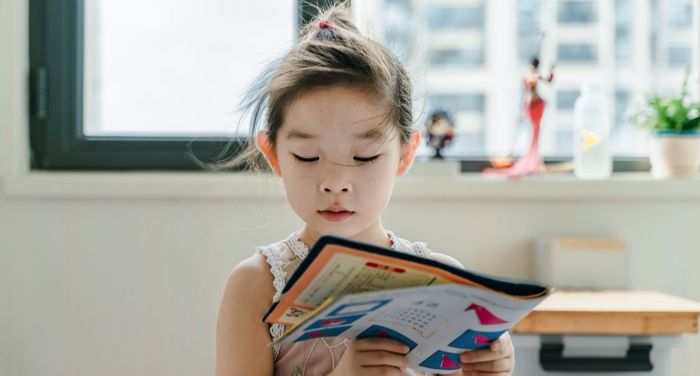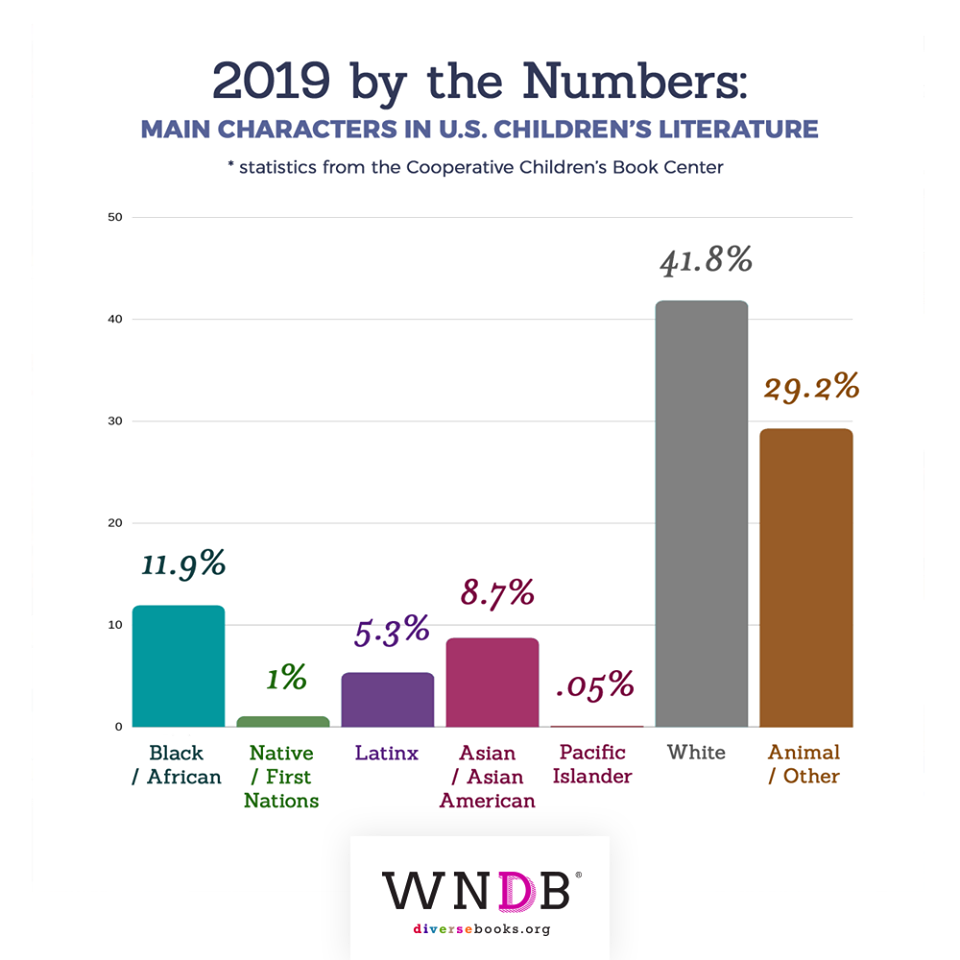The Cooperative Children’s Book Center (CCBC) has released its 2019 survey results on diversity in children’s and YA literature. The report breaks down the number of children’s and YA books by and about BIPOC (Black, Indigenous, and People of Color) from the previous year. This year, for the first time, they also counted books by and about Pacific Islanders. In years past, these were counted with the Asian/Asian American count, but this was not an accurate label.
The CCBC has also recognized that in future reports, they will be adding Arabs/Arab Americans to their findings.
In their count, a single book can be counted in more than one category. For instance, if a single author identifies as Afro-Latinx, or if a book has two main characters of different backgrounds. This helps explain why percentages don’t add up to 100, and why the numbers for “by” and “about” don’t add up to the total amount of books received.
For a quick breakdown, out of the 3,716 books they surveyed, here are the percentages of main characters:
- Black/African: 11.9%
- First/Native Nations: 1%
- Asian/Asian American: 8.7%
- Latinx: 5.3%
- Pacific Islander: 0.05%
- White: 41.8%
- Animal/Other: 29.2%
- LGBTQIAP+: 3.1%
- Disability: 3.4%
When looking at books featuring characters that were written and/or illustrated by authors and/or illustrators of the same race, here are those breakdowns:
- Black/African: 46.4%
- First/Native Nations: 68.2%
- Asian/Asian American: 100%
- Latinx: 95.7%
- Pacific Islander: 80%
From the CCBC post about the findings, Madeline Tyner writes, “Despite slow progress, the number of books featuring BIPOC protagonists lags far behind the number of books with white main characters—or even those with animal or other characters. Taken together, books about white children, talking bears, trucks, monsters, potatoes, etc. represent nearly three quarters (71%) of children’s and young adult books published in 2019.”
While there has been some progress, there is much more that needs to be done in diversity in children’s and YA literature. For more information, including a breakdown of the percentages of books received for the survey in 2018 vs. 2019, check out the CCBC post here, and the FAQs about the statistics on diversity in publishing here.
Need suggestions for awesome and diverse kid lit?
30 Must-Read Diverse Children’s Books
12 Own Voices Middle Grade Audiobooks
8 Must-Read Diverse Historical Fiction YA Books


